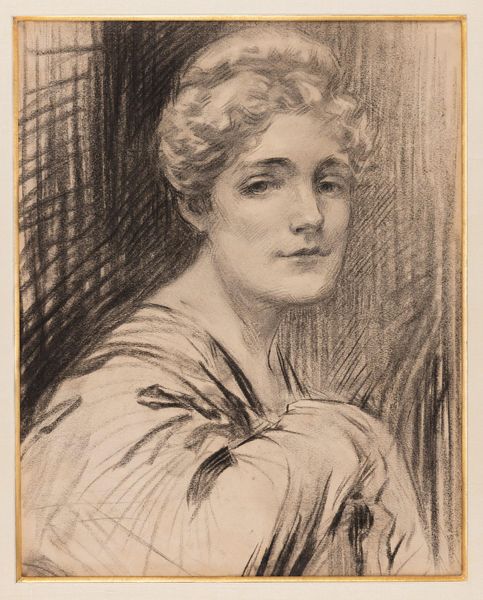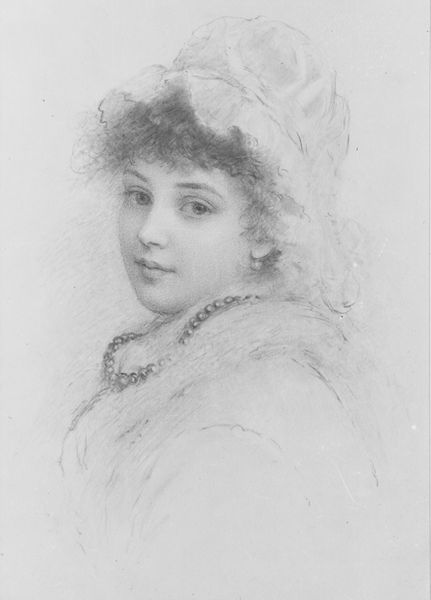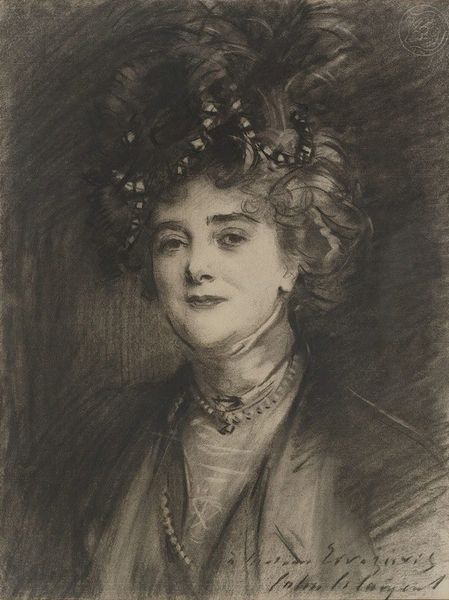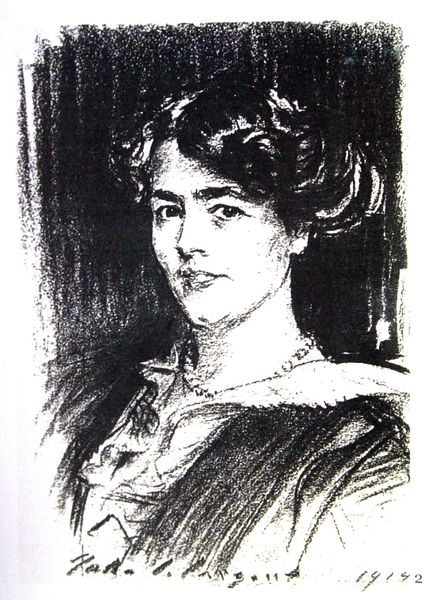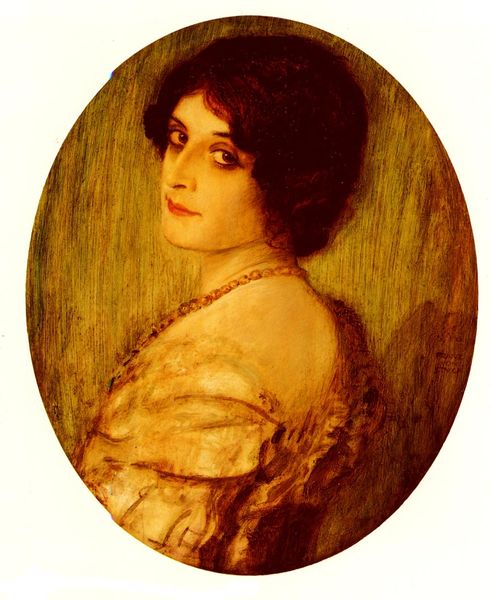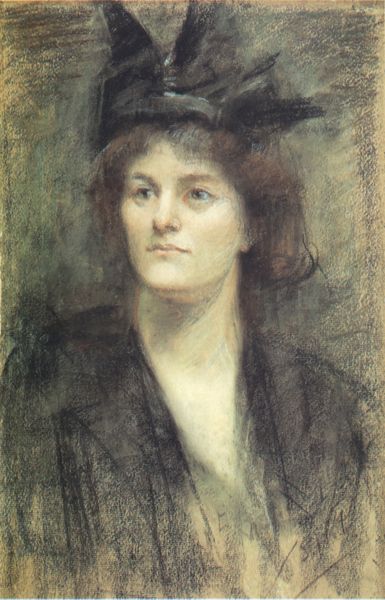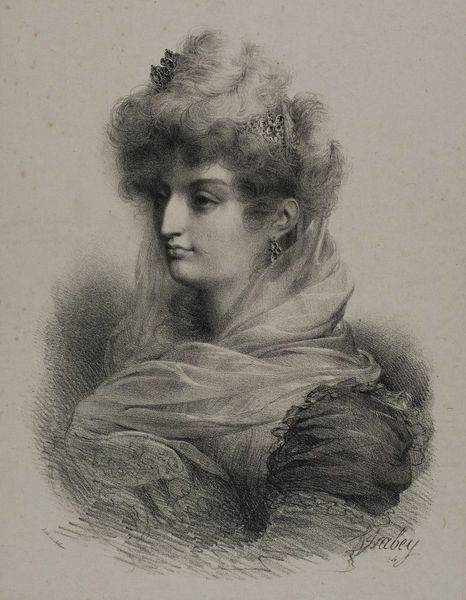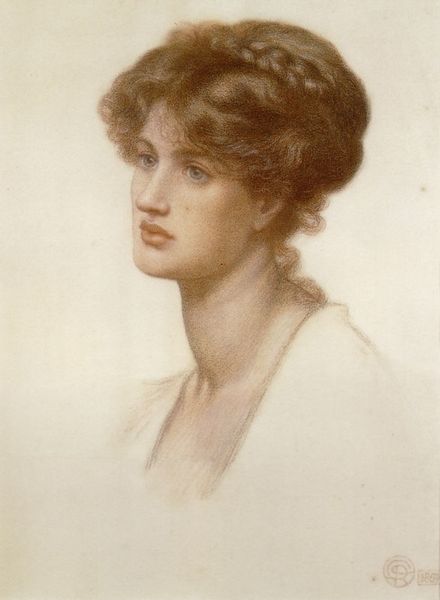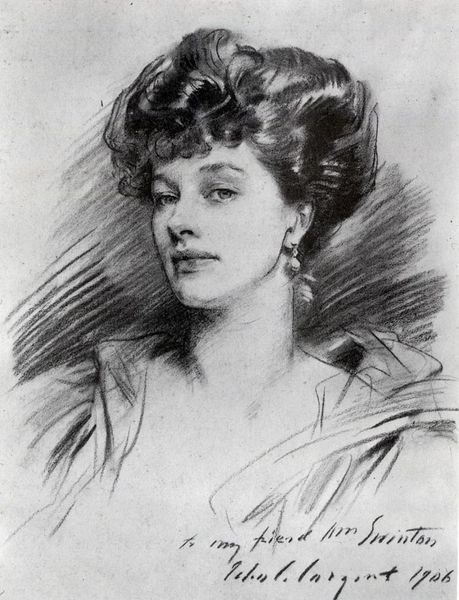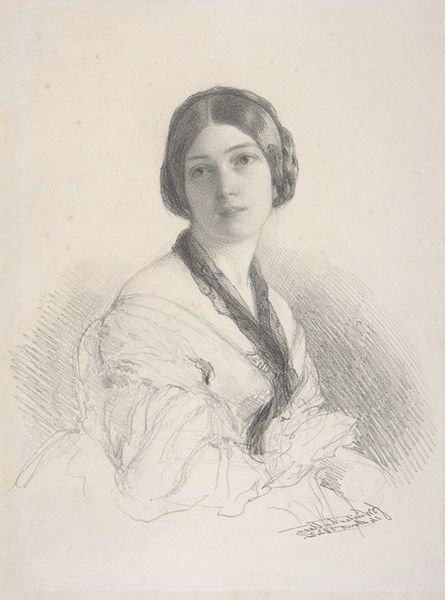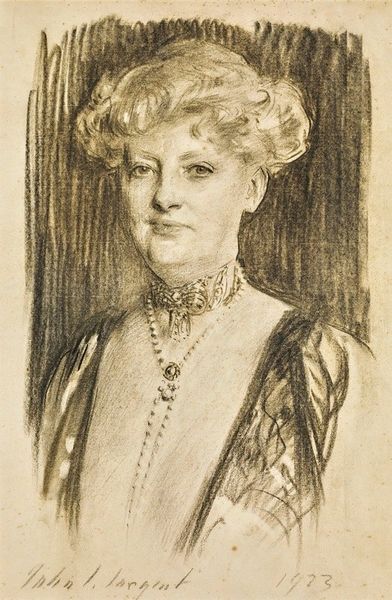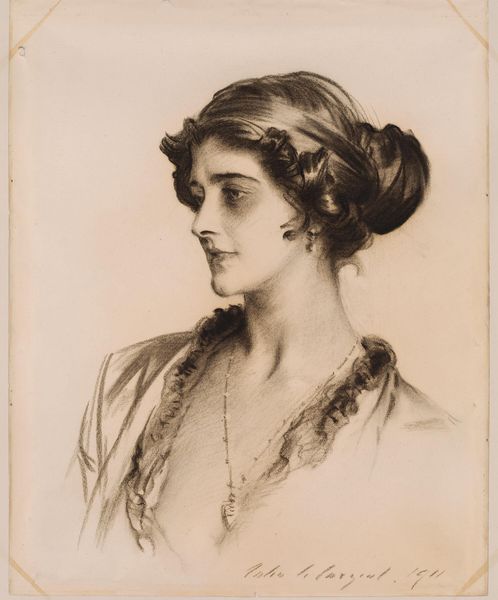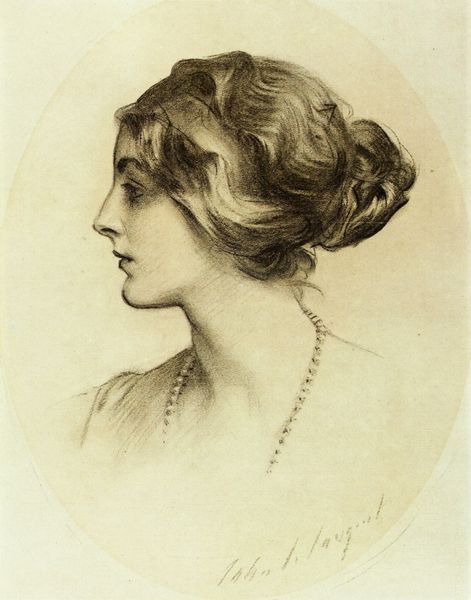
Dimensions: 62.87 x 48.26 cm
Copyright: Public domain
Curator: John Singer Sargent created this captivating drawing of Blanche Marchesi around 1910. It’s currently held in a private collection. My initial response is of profound control and precision—the contrast between the softness of the sitter's features and the definitive lines shaping her structure exudes intent. Editor: The sitter, opera singer Blanche Marchesi, seems burdened by her place in society, trapped between beauty and the performative labor expected of women entertainers. She embodies the complex intersection of fame and the restrictions placed on women's bodies. Curator: Yes, the somber shading expertly defines the features, but for me, this control showcases Sargent's technical command. Notice how the loose sketching of the background sets the formal bust in higher relief, a classical framing tactic. The chiaroscuro isn't just atmospheric; it actively builds her form, light playing over the architectural planes of her face. Editor: The use of charcoal and pencil heightens the contrast between light and dark, perhaps reflecting the public and private personas expected of a performer like Marchesi. The gaze isn’t confrontational, which I think reveals the fatigue of continually performing for an audience’s pleasure. Curator: I concur, and it underscores a calculated use of the medium. Sargent's economical approach captures the sitter's essence. Her interiority manifests from a study of form itself—a dialogue between texture, line, and contrast. The sketch isn't merely representational; it is an abstract play of tonal values carefully orchestrated. Editor: Seeing this piece reminds me of similar issues with artists like Lotte Laserstein in the Weimar Republic—celebrated as “new women” in their fields yet forever labeled, critiqued, and positioned relative to their gender, a societal weight rendering many such women visibly burdened. It prompts a somber appreciation of Marchesi’s cultural contributions but with consideration of the socio-economic demands on performers and female celebrities then and today. Curator: Such interplays and dialogues across epochs of artworks reveal shared techniques, compositional priorities, and stylistic approaches—the underpinnings that sustain our knowledge of visual traditions and continue influencing today’s creatives. Editor: For me, locating these art objects within our ongoing battles for equity reminds me how we carry forward that project. I can continue viewing this piece as more than just a study, an echo of a continuing struggle.
Comments
No comments
Be the first to comment and join the conversation on the ultimate creative platform.
